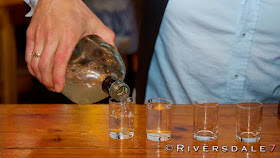Our morning landing at the Argentinian Station Brown was in
clam waters with no wind. The red buildings of the station are at present
unoccupied and the area around the station site has a few Gentoo Penguins,
Blue-Eyed Shags and Snowy Sheathbills.
The unique attraction at Brown is the opportunity to climb
the hill behind the station and slide down. Many of us did slide down the snow
channel, even though we had not been snow sliding for many 10’s of years.
Others of us had the opportunity to go cruising in Polarcirkle boats and kayaks
and this allowed us to get closer to Humpback Whales and several species of
seals including the big leopard Seals.
After lunch we headed south through Lemaire Channel. This location is perhaps the most the photographed site of our journey.
At Pleneau Island the surface rocks have been rounded smooth
by over-riding glaciers and on the rock surfaces one can see the glacial
striations gouged into the rocks by boulders that were embedded in the bottom
of the over-ridding glacier. Many people had a close-up view of the rocks as
they climbed to the top of the island. Gentoo Penguins were nesting on the
lower slopes and often there were chicks ranging from newly hatched to those
that were older and rid of their down coats and now nearly fully feathered and
ready for the sea. There was a single Adelie Penguin sighted among the Gentoo
colony. During our landing time, the kayakers and Polarcirkle boat cruisers had
a wonderful experience and close-up views of the many nearby grounded icebergs.
After dinner our camping group went ashore and set up their
tents and snuggled in for a night ashore. All went well and the extra-thick
mats and sleeping bags kept everyone toasty warm.






















































